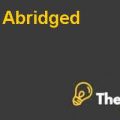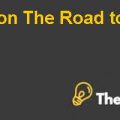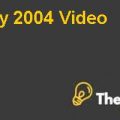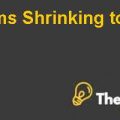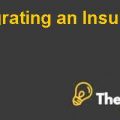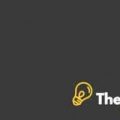
By Luann J. Lynch Source: Darden School of Business 3 pages. Publication Date: March 22, 2004. Prod. #: UV1722-PDF-ENG
John Johnson, owner of FinePrint, has few possibilities to consider: (1) whether to accept a one-time special order printing (case), (2) whether to outsource some of its printing to another printing company (case B, UVA- C-2194), and (3) whether to accept a one-time special order and outsource it to another printer (case C, UVA-C-2195). In making his decision, he must consider the relevance of certain costs, the behavior of these costs, and the extent to which it has limited capabilities. "
ASSUMPTIONS ABOUT THE CURRENT AND FUTURE BUSINESS ENVIRONMENT
The facility is currently running at full capacity however, the business should increase its production level. Since the past, Johnson had encountered slight changes in the cost of orders but if he would have increased his capacity of production then he could cater these special orders. Therefore, he should develop the facility to print low-cost brochures in order to to cater special order customers.
HOW MUCH EFFORT IS REQUIRED TO INCREASE THE PRODUCTION CAPACITY? WHICH ASPECTS OF THIS DECISION REQUIRE THE MOST EFFORT?
This decision demands a lot of effort as correct judgement will determine the future profitability of the company. If the company makes a wrong decision and fulfill the special order then scarce resources of the firm will get wasted as they will not be directed towards future profitable projects.
DECISION MANAGEMENT METHOD
The decision management method that has been used in the analysis calculates “contribution margin.” The total contribution margin, the total operating income and the per unit contribution margin are the basis on which the decision will be made. Decision tree for the given problem can also be constructed as FinePrint can fulfill the special order from its normal operating capacity or it can also fulfill the order by using outsourcing option (Refer to figure 1).
SEARCH FOR ALTERNATIVE COURSES OF ACTION
There are four alternatives that Johnson can pick to avail the available opportunities;
Alternative 1: He should reject offers of both Abbie Jenkins and Ernest Bradley and continue operating on full capacity.
Alternative 2: He should accept the offer by Abbie Jenkins and print 25000 brochures at $10 for 100 brochures.
Alternative 3: He should accept the offer by Ernest Bradley and get 30000 brochures print at the price of $8 of 100 brochures.
Alternative 4: He should accept both the offers by Abbie Jenkins and Ernest Bradley and increase his operating capacity simultaneously.
ANALYSIS OF THE FOUR ALTERNATIVES
For the analysis of all the above given four alternatives “contribution margin” has been calculated and used as a basis for decision-making.The contribution margin provides a way to implement the idea that as each unit of product is sold, a set amount of income can be reserved to pay fixed costs (Tinsley, 2004).
Contribution Margin can be defined as;
“The amount by which sales revenue exceeds variable costs”
Calculation for Alternative 1:
As in alternative 1, none of the opportunity is availed and the current production at full capacity is maintained at the level of 150000 brochures which is the full capacity, the revenue in this scenario is calculated by multiplying 150000 with a typical price of $17 for 100 brochures. Variable costs are obtained by multiplying 150000 with different values per unit. Variable costs per unit for different items are given in table 1 in the appendix. Fixed cost has remained constant for all the four alternatives. Contribution margin has been calculated by subtracting variable cost from revenue.Contribution margin for this alternative is 15,000 while units produced were 150000.
| Normal Operating Conditions | |
| Revenue | 25,500 |
| Variable Cost | |
| Direct Material | 6,000 |
| Direct labor | 1,500 |
| Overhead | 1,500 |
| Sales | 1,500 |
| Total Variable Cost | 10,500 |
| Contribution Margin | 15,000 |
| Fixed Cost | |
| Direct Labor | 3,000 |
| Overhead | 3,375 |
| Sales | 1,875 |
| Corporate | 3,750 |
| Total Fixed Cost | 12,000 |
| Total Operating Income | 3000 |
Calculation for Alternative 2:
As in alternative 2, opportunity of the special offer is availed and the current production at full capacity is maintained at the level of 150000 which is the full capacity but 25000 of these units are sold to Abbie Jenkins at $8 for 100 brochures. The revenue in this scenario is calculated by multiplying 125000 by at a typical price of 0.17................
This is just a sample partial case solution. Please place the order on the website to order your own originally done case solution.
This solution will also come with separate excel file with calculations.

